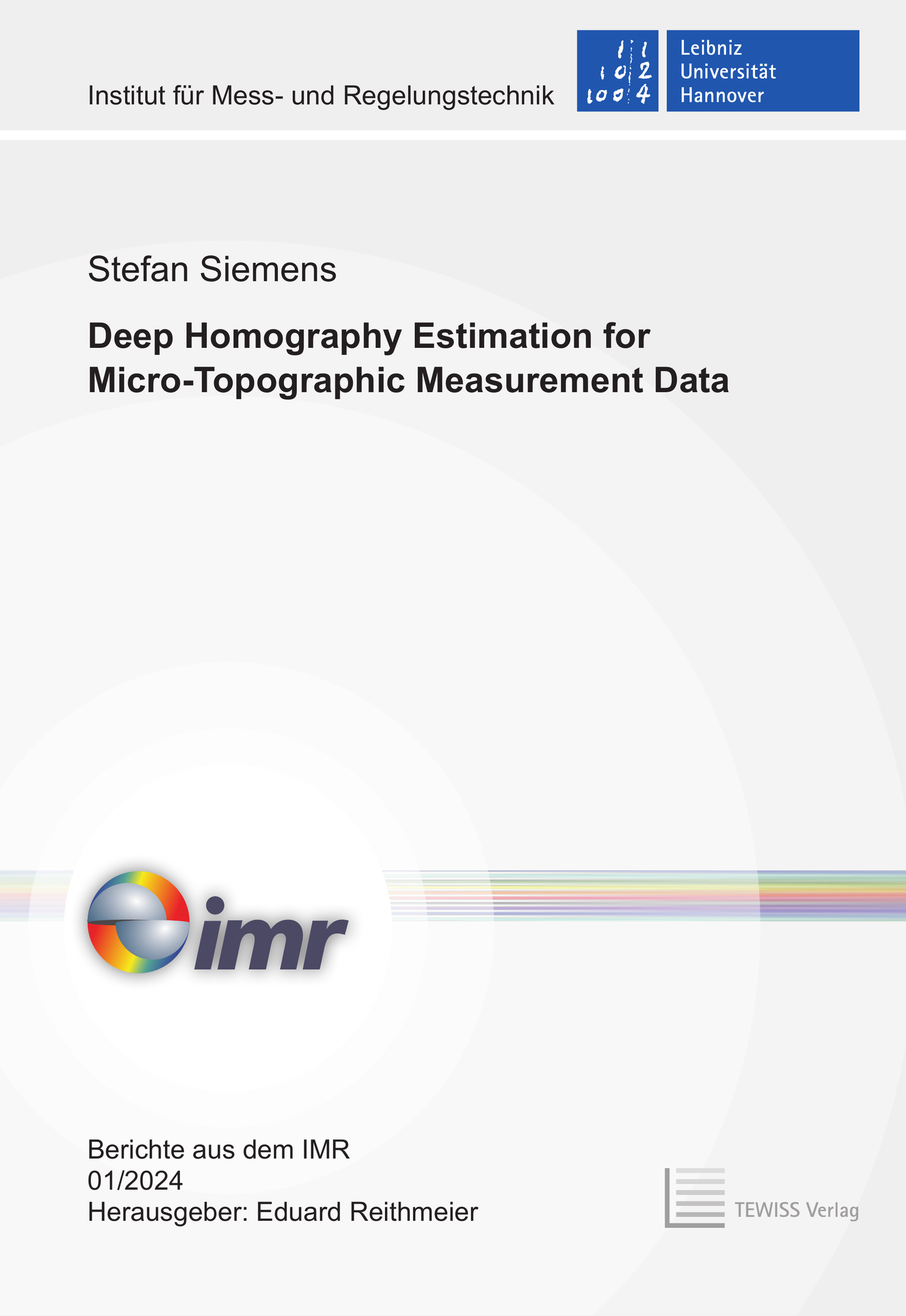Deep Homography Estimation for Micro-Topographic Measurement Data
Autor: Stefan Siemens
ISBN: 978-3-95900-914-0
Dissertation, Leibniz Universität Hannover, 2024
Herausgeber der Reihe: Eduard Reithmeier
Band-Nr.: IMR 01/2024
Umfang: 210 Seiten, 71 Abbildungen
Schlagworte: surface metrology, image registration, convolutional neural networks, confocal laser scanning microscopy
Kurzfassung: Surface characteristics can significantly impact the functionality of a component. Accurately measuring and describing these characteristics therefore plays an important role in precision engineering and manufacturing fields, such as aerospace, automotive, biomedical, and semiconductor manufacturing. Optical measurement systems face a trade-off between high lateral resolution, necessary for resolving small features, and the need for a large measuring field for comprehensive results. A common solution is stitching multiple high-resolution images to effectively create a large measuring field. However, conventional registration algorithms often require extensive overlaps between individual images, lack robustness against large image variations, are susceptible to noise, and necessitate manual parameter adjustments. This work presents a comprehensive investigation and development of image registration techniques in optical metrology, aiming to improve the registration of micro-topographic image data compared to conventional methods. A key contribution is the development and validation of a novel registration approach based on convolutional neural networks, specifically a two-stage architecture named Coarse-to-Fine Image Registration (CoFiR) Net. This method enables significant improvements over conventional registration techniques in terms of accuracy, robustness against large image variations and image noise, as well as computational speed. The development and validation of the CoFiR Net are conducted using an extensive dataset of micro-topographic measurements. This dataset comprises over 70 000 measurements with two confocal laser scanning microscopes at various magnifications, on samples involving a wide range of materials, machining methods, manufacturing processes, and different surface roughnesses. This dataset offers a valuable resource for future work in areas such as defect detection, surface classification, image super-resolution, or monocular depthestimation. Additional contributions of this work include the novel use of convolutional neural networks for the registration of non-overlapping images.


